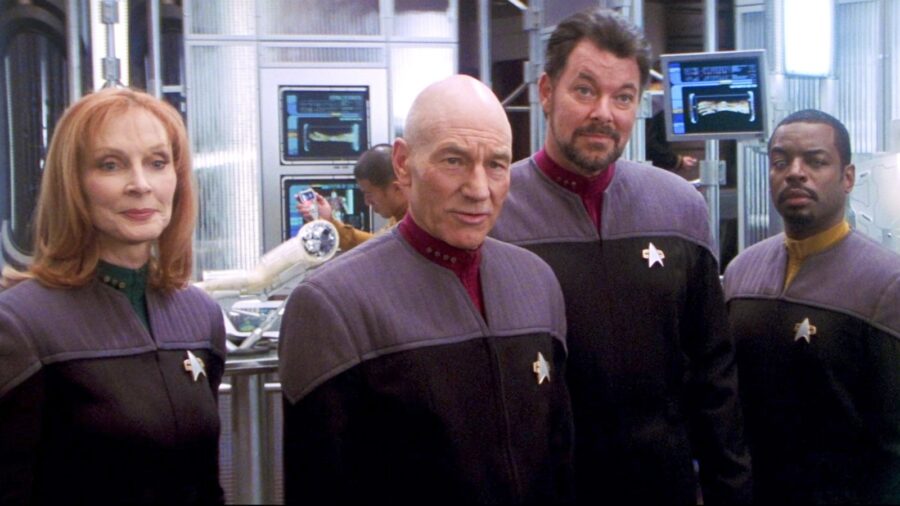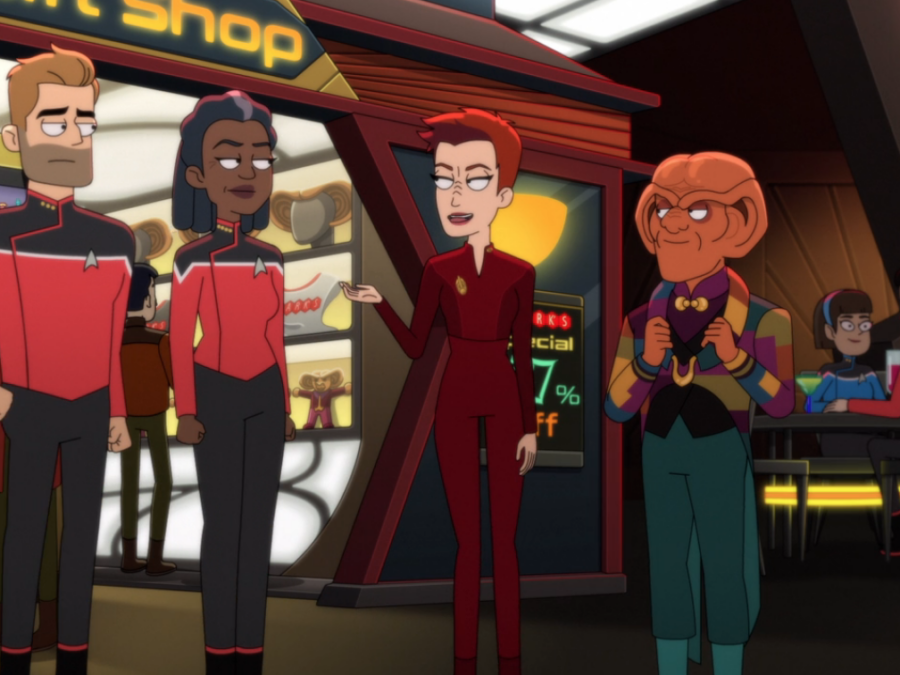Star Trek Should Bring Us To The Post-Nemesis Time Period
Of all the times Star Trek could return to in a future project, our writer argues the period immediately following 2002's Star Trek: Nemesis would be ideal.

Even for hardcore Star Trek fans, it can be confusing how often different series yank us back and forth through time. For example, Star Trek: Enterprise is a prequel to The Original Series, but so are Star Trek: Discovery (right until it controversially catapulted into the 32nd century) and Strange New Worlds (another Original Series prequel that just happens to be set a hundred years after Enterprise, effectively making it a sequel to that series). Now, fans are understandably gushing over the Paramount+ show Star Trek: Picard finally giving us a proper epilogue for characters like Picard and Riker, but in my opinion, the franchise will have a much better future if they focus more on the post-TNG movie timeline that Lower Decks is set in.
One of the great ironies of modern Star Trek is that Lower Decks, an animated comedy that takes nothing seriously except for a love of Trek, is set in arguably the most important time period in the franchise. That show begins about one year after the awful Star Trek: Nemesis movie (yes, the one starring baby Tom Hardy as the Big Bad). For those trying to keep track without busting out the red yarn and doing your best Charlie Day impression, that means Lower Decks takes place about 20 years before the beginning of Star Trek: Picard.
In fact, it is Star Trek: Picard that underscores the need to explore more of what happened in the Lower Decks time period with more shows (or, dare we say it, more movies). We know that really universe-shattering things happened in these 20 years: Romulus blew up (a strange and unnecessary connection to the 2009 movie), the Federation suddenly became cool with armies of android slaves (more disturbingly, Picard seems cool with it after previously arguing Starfleet should never create a robotic slave race), and Picard became besties with Romulans (and a temporary pariah to Starfleet). Oh, and the Neutral Zone collapsed, the galaxy is patrolled by badass space rangers, Dr. Crusher went into hiding and became enmeshed in a sinister conspiracy…need I go on?

It is, to put it mildly, a lot for any fan to take in, and many fans were understandably curious how this beloved franchise universe got so much darker in such a short period of time. New Star Trek shows set a bit earlier in time could show us some of these developments while also returning to some fan-favorite locations and storylines.
For example, Lower Decks already brought us back to Deep Space Nine, but that singular episode didn’t really give us any updates on Sisko (last seen joining the Prophets and prophesying his own return) or many updates on Bajor (a planet that Sisko basically sacrificed his corporeal life to save), and given the return of the Founders in Picard, we are more curious than ever about how the events after Deep Space Nine ended helped shape the future of the galaxy.
Ultimately, more Star Trek series or films set in the time period directly after Star Trek: Nemesis could help provide the necessary context for many of the characters and events we see in Star Trek: Picard, all while answering burning fan questions about previous storylines and characters (honestly, we’d set our phasers to “kill” to learn more about what characters like Garak and Odo were up to after the Dominion War). So far, our closest live-action glimpses to this time period have been the occasional flashbacks in the third season of Star Trek: Picard, but like William Shatner’s Kirk demanding more warp power, the fans need everything that Paramount can give us when it comes to this crucial time period.
If nothing else, Lower Decks already showed us a far future where Miles O’Brien is rightly honored as the most important Starfleet officer in history, and we’d like to know more about how the chief went from being a humble teacher at Starfleet Academy to having Zefram Cochrane-style statues celebrating his galactic greatness (perhaps they realized that O’Brien, like his ancestor, was more than a hero…he was a union man).











